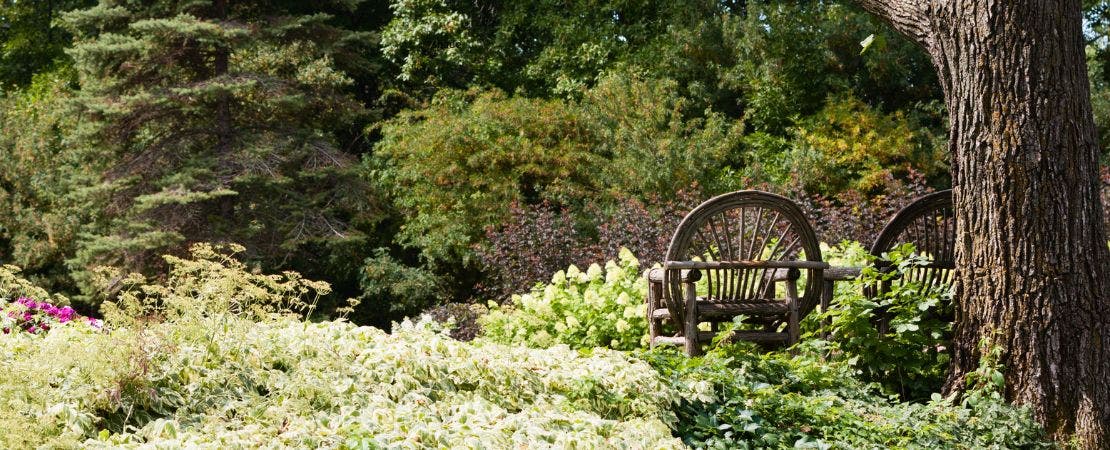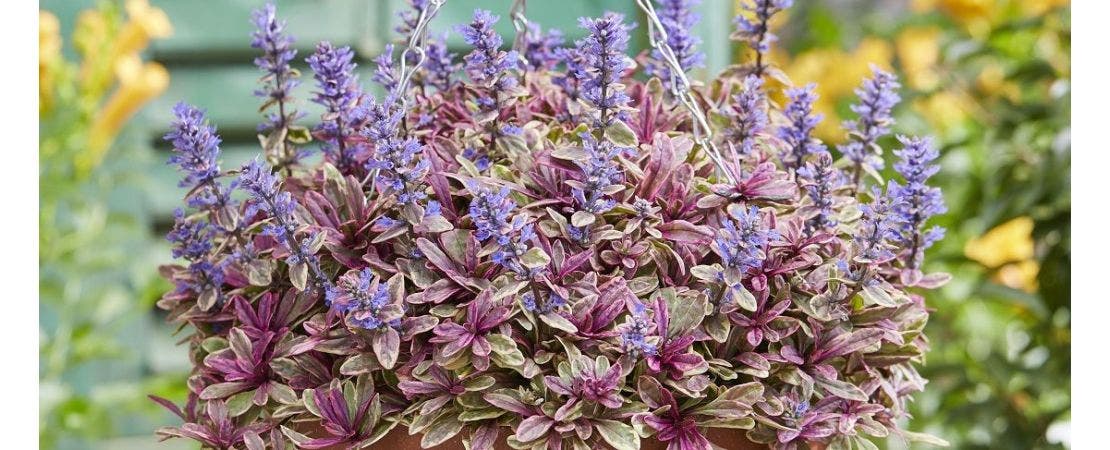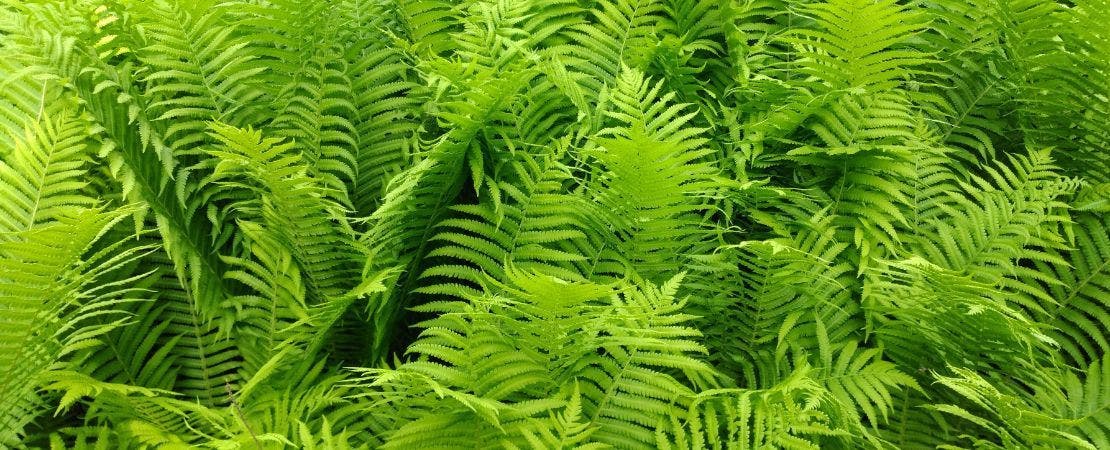Perennial Ground Covers for Shade
Need something to grow in the shade? You have many choices. Pick plants based on the shade and your climate.
In forests, the trees cut off the sunlight, so plants that grow under them are able to live well on only a portion of full sunlight. Most plants that naturally grow out in the open will not survive, let alone spread, in shaded spots. Plants of partial shade, forest edges for example, are adaptable, tolerating both full sun and deep shade, actually doing best when the light conditions vary during the day.
Shaded spots often have different moisture conditions than the sunny spaces close by. They stay humid longer after a rain. But they may not be moister than the open areas for very long because the trees’ roots seize any water. The moistness in the shade depends the rainfall at the site and the soil.


Garden Shade: How Much Shade?
Shade itself is complicated. Full shade is very dark and occurs under conifers like pines (Pinus) and junipers (Juniperus) and in between two buildings. In partial shade, light filters through a layer of leaves or the plants are in shade for part of the day but receive direct sunlight for two to six hours. In dappled shade and light shade, the shading is minor, or includes lengthy periods in which the plants are in full sun. With buildings and conifers, the shade is the same all year but if the shade comes from deciduous trees, there no shade from fall to spring when their branches are bare and steadily more shade as their leaves expand.
Shade Garden Plants and Ground Cover
Because shade conditions are complex, one approach that is very likely to work is to grow shade plants that are native to the woods or shaded slopes of your region. In the eastern United States, wintergreen (Gaultheria procumbens), astilibe (false goat’s beard, Astilibe, pictured below), and local violets (Viola) are a few of the many choices. In the plains states and along the Rocky Mountains creeping phlox (Phlox), monardas (Monarda species), and geraniums (Geranium) are native shade plants; in the far West you find coral bells (Heuchera), lupines (Lupinus), and salvias (Salvia) in shady spots. There are many, many more.
Shade plants can be anything from very short plants like violets (Viola species) to small trees (five to ten feet tall) like redbuds (Cercis). You would not call a redbud a ground cover, but azeleas (Rhododendron) and hydrangeas (Hydrangea), spreading out five feet and suppressing all plants under them, certainly can be. So consider whether the perfect plant for your shady spot might be a shrub. A wide range of shade-tolerant shrubs exist, from ones known for their flowers like hydrangeas (Hydrangea), to ones that stay green most of the winter, for example rhododendrons and azeleas (Rhododendron), to conifers like yews (Thuja).
For full deep shade, choose carefully. Plants recommended for partial shade might survive but you are likely to kill any “full sun” plants you put there. Areas of partial shade are more forgiving; a wide variety of plants will thrive there.


Ground Cover Plants for Shade Gardens
Ground cover plants are great because when they cover the ground they keep out weeds. They require very little maintenance. For the ground cover to be the most effective, all of the ground needs to be covered. When choosing plants, note of how they spread. Creeping plants, from shrubby dogwoods (Cornus) to lily-of-the-valley (Convallaria), will fill the space as the original plants expand. Brunnera (Brunnera) and violets do not individually expand very much, but they will seed into spaces between existing plants. You can buy fewer plants of the spreading types because they can be counted on to expand. For quicker cover with non-spreading plants, calculate with the final size they reach and space new plants so that they will touch each other when they are mature.
Where would I start? Perhaps with perennial geraniums. Geraniums come in a series of heights and flower colors and form leafy, weed-preventing stands about two feet tall. They flower all summer long. Ajuga (also called bugleweed, Ajuga) is another favorite of mine. It has grown well in both light and deep shade in my yard and has spread quickly to cover the ground. The leaves—which come in many fascinating colors—lie so low to the ground that they look like the paving stones they grow next to. The flowering stalks are only a couple inches high, and when ajuga flowers, it turns that green carpet purple. A third favorite of mine are violets. Every region has its own native violets and many other violet species are easily purchased, so there are lots of choices. Violet flowers are not just purple, but blue, yellow, and white, and combinations, with small green leaves that are mainly, but not always, heart-shaped. My violets quickly spread by seed across a problem shady spot, forming an attractive green patch. When they jump into the flower beds, they are easy to remove.
The line between a good ground cover and an invasive species is pretty fine, depending, I think, mostly on climate. Lily-of-the-valley is a weed in some places, but it is doing better than any other plant in the dreadful area under my bird-feeder, where the birds stomp all the time in the shade of the big maple. Check your local sources (county extension offices or local horticultural schools) so you don’t get a plant you regret because it spreads aggressively in your region.
There are beautiful plants for that troublesome shady spot, ones that will make you smile when you see them. Sun plants seem to be more numerous in the garden trade, but there are in fact many absolutely gorgeous shade plants as well. Enjoy them.





